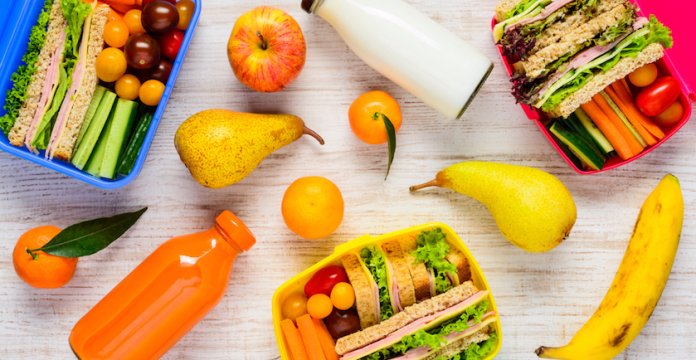
In addition to educating youngsters about regular hand-washing, which is a must for avoiding the spread of germs, now is the time to boost your children's immune systems. And with a lunch box full of healthy, tasty foods and snacks, you can do so naturally.
Step 1: Get Kitchen-Ready
Clean out your kitchen cupboards and fridge, removing nutrient-void foods such as processed meats, white bread, cookies, and sugar-filled goodies.
Read more about reasons to home cook your meals
Step 2: Load-up on All-Natural, Immune-Boosting Lunch Foods
- Whole grain breads, pitas and wraps are rich in fiber, vitamin B, folic acid, and other nutrients, and these slow-burning carbs will keep kids’ energy steady for hours.
- Colorful veggies and fruits such as apples, berries (fresh or frozen), cantaloupe and kiwi, tomatoes, kale, broccoli, romaine lettuce, carrots, and avocados are also great for lunches. Naturally rich in antioxidants and important vitamins and minerals, these foods are essential for overall health, including immunity, growth, and development.
- Lean, protein-rich sources such as organic, nitrate-free lunch meats, grilled chicken, tofu, or tempeh will help maintain energy, increase metabolism, and boost immunity, too – so be sure to load up.
- Healthy, essential fats such as omega-3 fortified eggs, flaked, light tuna, and olive oil are also a good source of nutrition. Omega-3 fatty acids are absolutely essential for kids’ overall health, including brain development and function.
- Raw, natural nuts and seeds, including almonds, sunflower seeds, cashews, and walnuts, as well as 100 percent natural peanut butter (or soy or other nut butters) are rich in healthy fats, fiber, and protein, as well as immune-boosting vitamin E, zinc, and iron.
Step 3: Prepare Foods Kids Will Want to Eat
Kids can be pretty sneaky about avoiding foods they don't want to eat. Sometimes they manage to conceal most of their food in a wrapper that ends up in the garbage, other times they broker a trade with a salmon-loving friend. The key to getting your kids to eat healthy foods is to make them fun and kid-friendly. Here are a few lunch options:
- Peanut butter and jam wraps: Layer peanut or other nut butter with jam on a whole grain wrap, roll, and slice into multiple shapes and sizes.
- Tuna or egg salad stuffed pitas: Mix organic mayonnaise, chopped celery, mustard or curry powder, and flaked, light tuna or hard-boiled chopped eggs. Scoop into pita halves with lettuce and tomato.
- “TLT” sandwiches (the healthier BLT alternative): Stack low-sodium turkey slices with lettuce, tomato, and your child's favorite spread (organic mayo, mustard, or hummus) on whole grain bread. Slice into fun triangle shapes and go.
Step 4: Don’t Forget Immune-Boosting Snacks and Beverages
- Choose unsweetened, 100 percent fruit juice drink boxes for cold- and flu-fighting vitamin C.
- For snacks, probiotic, low-sugar yogurts offer up healthier digestion and immunity. Homemade trail mix comprised of raw nuts and seeds, with dried cranberries or raisins, is a healthy snack that's almost always a hit with kids. As a treat, you could include a small amount of dark chocolate chips. Sliced apple or carrot sticks with hummus for dipping is another fan favorite.
Quick Tips for Keeping Kids Satisfied at Lunch
- Keep it fun! Alternate the bread or spread you use on sandwiches, or try cutting their sandwich on different angles. The more appealing it looks to eat, the higher the chance it will end up in their stomach and not the garbage bin.
- Include your children. When kids are involved in grocery shopping, preparation, and packing of their lunch, they’re more likely to eat and enjoy all of it, with less food wasted.
- Start them off right. More and more research shows the importance of a healthy breakfast for proper fuel before, during, and after school. Try making a smoothie combining a green food supplement with yogurt, berries, and a fish oil liquid such as omega-3 with water or juice.
Read more about why omega-3s are important for children
One last note: If you notice your child is experiencing unusual symptoms beyond a typical cold or cough, call your doctor and make an appointment. If there’s one thing you won’t regret, it’s being cautious when it comes to their health and well-being.
Image: San José Library










